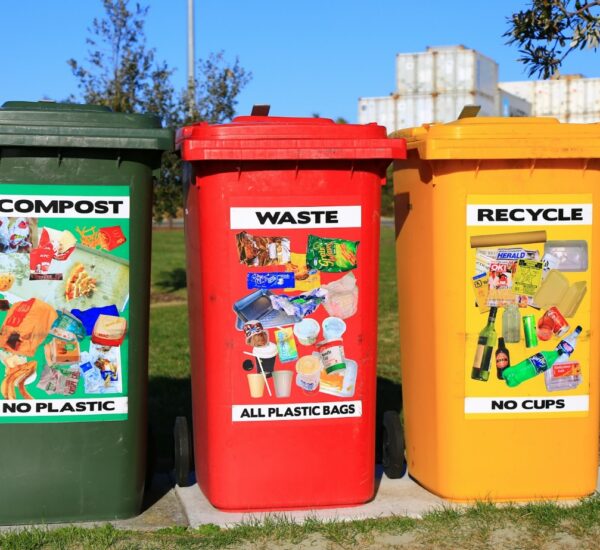University personnel must manage chemical wastes in accordance with local, state, and federal regulatory requirements. Compliance is necessary to protect the health and safety of University employees, students and visitors and to meet local, state, and federal regulatory requirements.
Legal Requirements
The U.S. Environmental Protection Agency (EPA) and the Washington State Department of Ecology (WDOE) issue regulations implementing federal and state laws. The City of Pullman regulates discharges to the sanitary sewer systems.
Violations
Violations of local, state, or federal law may result in fines and/or imprisonment for University personnel, supervisors, and administrative officers.
Related Procedures
Sections S5.66 and S5.68 provide procedures for the storage, recycling and disposal of chemical wastes. The procedure to identify if your waste is regulated is found here.
Chemical Wastes
Policies and procedures in S5.66 and S5.68 apply only to the management of chemical wastes which are regulated by the United States Environmental Protection Agency and the Washington State Department of Ecology.
Radioactive Wastes
These procedures do not apply to radioactive wastes. The Radiation Safety Office manages radioactive chemicals. Telephone 335-8916 for assistance or refer to S9.60.
Waste Identification
The waste generator is responsible for determining whether chemical wastes meet Washington’s definitions of dangerous waste. Wastes identified as dangerous waste must be packaged, stored, transported, and disposed of in a safe and legal manner.
Generators may identify which wastes must be managed as dangerous waste by referring to this procedure. As an alternative, generators may report all wastes by submitting a Chemical Collection Request Form (see below), and EH&S will determine the proper management method. Examples of dangerous wastes include laboratory chemicals, photographic processing chemicals, leftover paint, automobile fluids, and other maintenance materials.
Minimizing Waste
Each department is responsible for minimizing chemical waste generation through prudent purchasing practices, product substitution, recycling or reducing the amount of chemicals used by the department.
Providing Hazard Data
To facilitate safe and legal management of hazardous materials, each department is responsible for providing hazard information (i.e., a Material Safety Data Sheet) to Environmental Health and Safety upon request. See also S5.10.
Container Requirements
The waste generator is responsible for properly packaging their chemical waste.
- Place each chemical waste in a separate, leak-proof container which does not react with the substance. Usually this is the original container.
- The generator supplies containers for disposal or recycling of chemical wastes.
- Do not combine different wastes in the same container.
- Segregate containers of potentially reactive chemicals (e.g. acids/bases or oxidizers/flammables)
Labeling Requirements
The waste generator is responsible for properly labeling chemical waste containers.
Chemical Collection Request Form
Use a Chemical Collection Request Form to report chemicals for disposal or recycling. The form is available here. Hard copies may also be obtained from Environmental Health and Safety by calling 509-335-3041. Contact EH&S for alternative reporting options if more than 25 forms are required at any one time.
General Instructions for Online CCR form
Complete a separate Chemical Collection Request Form (CCR) for each waste. One form may be used for multiple containers of identical waste (i.e., same waste composition).
When submitting forms online, enter all of the information available, then continue to the next page, where you must review and submit the information. Your browser will then return a Dangerous Waste label and CCR number (described above). You may either print this page and attach it to the waste container(s), or transfer the information to the Dangerous Waste label already on the container.
Name
Enter the name of the responsible person who can answer questions about the waste.
Mailstop
Enter your department mailstop number. Check with your department office if you do not know this number.
Phone
Enter the number at which the responsible person can be reached.
Building and Room
Specify the building name and room number where the waste is to be collected.
Constituents and %
Enter the complete chemical name (IUPAC) for each of the waste constituents. Do not use chemical formulae or abbreviations. Also record the percentages of each constituent. Be sure that listed constituents account for 100% of the container contents (including water).
Unknown Chemicals
If chemical wastes cannot be identified, fill out a Chemical Collection Request Form as completely as possible. Write the term “Unknown” in the Constituents section of the form and add any information available concerning the waste (i.e., known constituents, manufacturer’s name and address, physical appearance). Generators of unknowns should make every effort, including contacting departed faculty or staff, to determine a container’s contents.
Properties
Indicate liquid, solid, and/or gas. If it is a combination of physical states, mark each physical state present in the container.
Number of Containers
Indicate the number of containers.
Size
Indicate the size of the container(s), e.g., 4 liters, 250 milligrams.
General Instructions for traditional (paper) CCR form
All information on the paper form is the same as that on the online form. Detailed instructions for filling out the paper CCR are provided on the back of the form. When filling out the CCR, write information only in the unshaded areas. Type or clearly print all information requested on the form.
Figure 2 – A properly completed Chemical Collection Request Form
Form Distribution
- Enter the CCR# on the Dangerous Waste label
- Place the yellow copy of the form in the files of the generating department/laboratory.
- Send the white copy to EHS at mail stop 1172.
EH&S Responsibilities
Environmental Health and Safety (EH&S) assists departments by collecting, designating, recycling, and disposing of chemical wastes.
EH&S provides departments with information on waste minimization and with directions for preparing chemical wastes for recycling or disposal.




